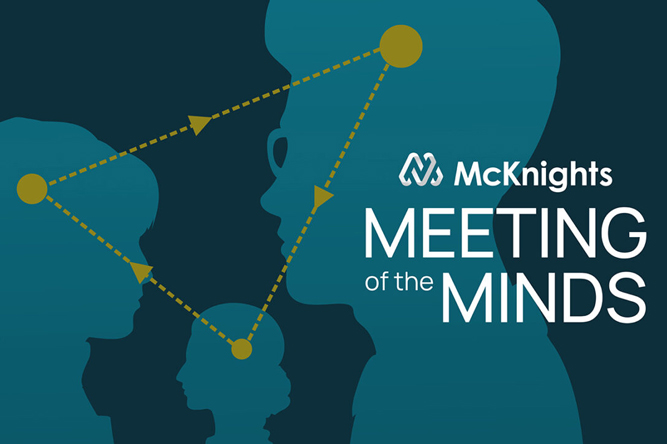
As we cross the two-year mark in this pandemic, it’s natural to consider all that our organizations and industry have been through over the last 24 months: Remote workforces, returning workforces, illnesses and vaccine mandates, complete state and company shutdowns, regulation changes and increased demand for infection control, and last but certainly not least: the struggle to find and hire adequate talent.
Your secret weapon in 2022 will be—drumroll, please—creating a culture of engagement! Let’s explore this, as I’m sure you’ve read article after article on recruitment, retention, culture, branding, etc., and how to move forward. Company culture is truly where the secret sauce is. Once you master your culture, you get a shot at improving your outcomes in this war for talent. Easier said than done, yes, but it’s doable, and note I didn’t say winning the talent war but improving your outcomes. In today’s world, it’s hard to win when everyone is struggling and competing for the same talent across industries. Your investment will need to be in a leader that is committed to the vision you want to create.
Company culture not only defines your organization, work environment, and team members, but it also significantly impacts your reputation and brand. It’s been noted that 2022 is going to be “the year of workplace culture.” According to Forbes,[1] the tight labor market trends will continue in 2022 (imagine that!), and one key to recruiting top talent will be a renewed focus on company culture. Creating a culture of engagement can increase brand awareness and boost employee engagement and productivity, ultimately affecting your organization positively. Long-term care has struggled for decades to navigate the uncertainty of living, working, and trying to survive and thrive in an industry that has always seemed understaffed and underpaid to accomplish some of the most valuable work being done: caring for our seniors.
Let’s look at the four most important elements of creating an engaging company culture.
1. The Power of Flexibility
Whether it’s returning to the office, going remote, or adopting a hybrid work model, the reality is that companies need to offer more flexibility in the workplace where they can. The key words here are “where they can.” If you are operating a 24/7 nursing home or hospital, flexibility is going to look different than a corporate office or a firm of traveling consultants. Meet your employees where they are and let them voice which type of work is better suited for them. Let them have a say and have the autonomy to decide what can be done in the office versus at home. There is proven research that shows when employees have a voice in how and where their work gets done, there is better engagement and better retention, along with a better sense of belonging.
This is a simpler concept when you are working out of an office, but what about the long-term care/senior living industry? The concept can be adapted to fit a model of care where the operation runs 24/7. Leadership should be allowed to pivot and work times/shifts/days that work for them and also work for your business. For some communities, maybe that means working a nontraditional schedule of 10 a.m. to 6 p.m., or 6 to 10 a.m. and 1 to 5 p.m., or perhaps working four days on and then getting three days off while taking calls outside of working hours. Leadership support is key in making the flexibility work. Your nurses and support staff may also be open to moving from traditional block scheduling to flex hours to accommodate daycare, school, and other life priorities outside of work.
To attract workers to our industry, we need to create a culture of trust, understanding, fairness, and flexibility. Positions that traditionally have worked in our homes—such as MDS coordinators—should have the ability to be remote some days. Other positions that handle direct care should have the autonomy to choose whether short shifts, extended shifts, or maybe split shifts would work for them.
2. Refresh and Renew
Culture is powerful. It is the number one criteria for people’s decisions to join, stay, leave, or engage with their roles. Now is the time to refresh and renew your culture. Take a look at culture from a discovery lens and understand what’s working well and not so well in your organization. Solicit feedback from those who are new and those who have been around a long time. Understand where your biggest opportunities for change are. From there, you need to take action. Put culture renewal at the top of your organization’s priority list: Talk about it, be authentic and transparent about why you are making changes, and reinforce the culture you want to see.
3. Foster Accountability
The hardest part of a culture change is accountability. It only takes one bad apple to wreck a good thing, so make sure to address the people who are not on board with your new or refreshed cultural vision. Be consistent, be fair, and manage performance when it comes up by addressing and laying out expectations for behavior.
4. Leadership Is key
We’ve all done it: Sometimes, you make a wrong hire. Sometimes, the person just isn’t the best fit for the role, and you only find that out after you’ve hired and invested in them. When selecting new people, think about the values and culture of your organization and if that person has the skill set and like-mindedness to beat the same drum. Leadership is tricky; you need a balance—someone who is aligned with company values but also able to bring in new ideas.
Employer culture shouldn’t be taken lightly. It can have a profound impact on employee and customer satisfaction—and ultimately your bottom line. Done right, culture can create a thriving business model that people want to be a part of, and as a bonus, give you leverage in hiring the best talent in the market. Done wrong, it can lead to a poor reputation, poor ratings, and leave you struggling to keep up.
Contact Us
As a national leader in senior care and living management and consulting services, Health Dimensions Group is uniquely positioned to assist organizations currently facing obstacles in their cultural renewal efforts. If you are struggling to build a strong culture for your organization, we can help. For more information, please contact us at info@hdgi1.com or 763.537.5700.
[1] https://www.forbes.com/sites/carolinecastrillon/2021/12/29/why-2022-is-the-year-of-workplace-culture/?sh=618bc4021bbb












